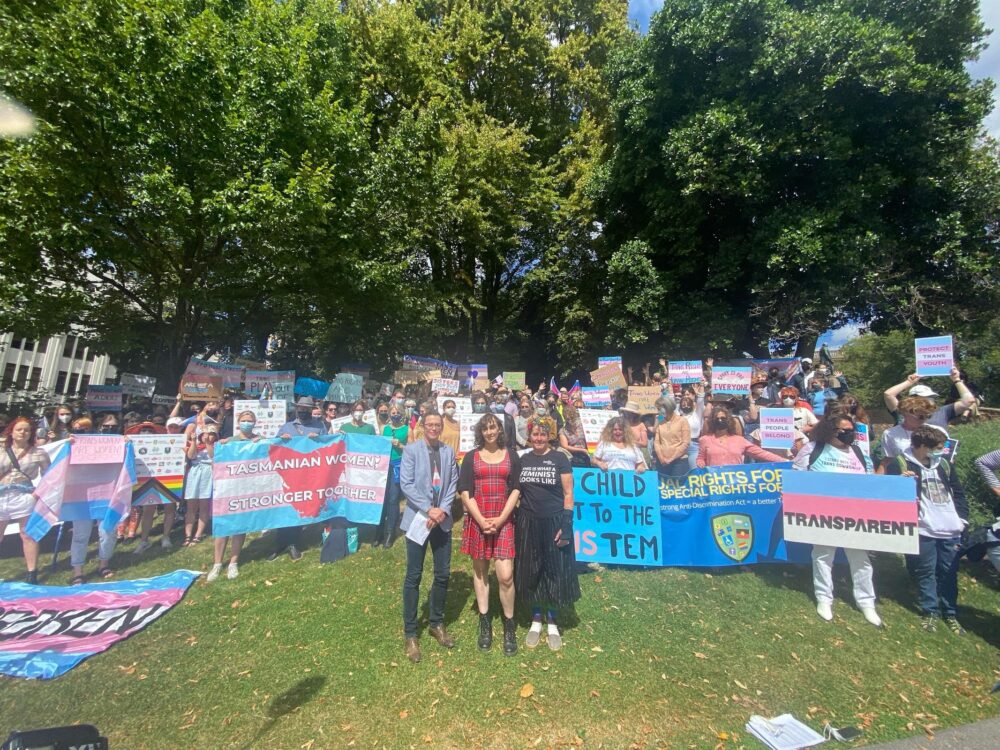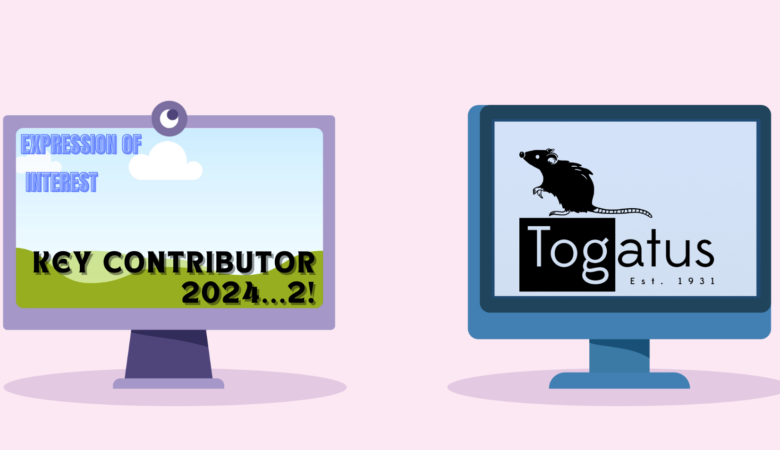The transgender community has certainly been visible lately, and while prejudice seems to be the order of the decade, progress and potential are too. This Transgender Day of Visibility (TDoV) I will reflect on where I believe the University of Tasmania (UTAS) is at in terms of transgender liberation. I will also take the opportunity to introduce myself.
I am transgender, transmasculine to be precise, and am in my first year of study at UTAS, though it is not my first time studying. My partner and I planned to move to Tasmania this year in time for my first semester, but like many Tasmanians, were unable to secure suitable housing, so I am studying via distance on the mainland, dreaming of the day I can call myself a ‘Trans-Tasman’.
I digress.
Tasmania has an interesting history when it comes to transgender people. The state has arguably, out of anywhere else in Australia, the strongest protections against discrimination and vilification, courtesy of the Tasmanian Anti-Discrimination Act 1998. There are also advocacy organisations for transgender people in Tasmania including Transforming Tasmania and Tasmanian Families for Trans Kids. In 2019, Tasmania implemented gender optional birth certificate laws, the most progressive in the world to date, according to Tasmanian transgender activist Martine Delaney (she/her). However, the state was not always so progressive.
Tasmania is infamous for being the last state in Australia to have decriminalised homosexuality, in the year I was born, 1997. Additionally, the lesser known criminalisation of cross-dressing in Tasmania was so until 2000, which endangered transgender people particularly, given their expression of identity could be misconstrued as cross-dressing. I would argue (jokingly, clothes are genderless), that most transgender people ‘cross-dressed’ as their assigned gender until coming out, so would we have been following the law in pre-2000s Tasmania by dressing in a gender affirming fashion? We love to see accidental transgender affirmation, even if it is the recently redacted phallic logo of the Federal Government’s Women’s Network.
So, with the state being (mostly) great, what can be said about its only university? Here are some of my thoughts, referencing the results of a student research report conducted last year by Aisling McCullough (they/them) and QUEENS of UTAS (Queers’ Unique Experiences of the Educational Networks and Spaces of the University of Tasmania).
My impression is that UTAS has potential. It has the basics of transgender inclusion and protection, but there is plenty to do to make the university truly welcoming and supportive of transgender students, employees and the general public. There are policies, statements and guidelines published on the official website relating to transgender students and employees. The online learning platform currently used by the university, MYLO, has capacity to display and update customised pronouns. Where employees are concerned, UTAS recently indicated support for paid transition leave in employee agreements, but has back-peddled as of yesterday, according to the National Tertiary Education Union (NTEU), offering only ten days of special leave, casual employees excluded. The Pride Society of TUSA has three openly transgender board members (myself included), and is proactively supporting transgender people though education and advocacy. We will release a video featuring our transgender board members in honour of Transgender Day of Visibility 2022. It is clear that there is movement, but there must be more, as evidenced by the recent student led research project, QUEENS of UTAS.
QUEENS of UTAS (Queers’ Unique Experiences of the Educational Networks and Spaces of the University of Tasmania) was a student led research project conducted by Aisling McCullough (they/them) which sought to understand the experiences and aspirations of LGBTQIA+ students at UTAS. Its main findings as they relate to transgender people were that improvements to pronoun usage, gender-neutral bathrooms, and general experiences of LGBTQIA+ people at UTAS are required.
Currently, the majority of employees and students at UTAS do not display their pronouns in communications such as in email signatures, on name badges, in presentations or in online studies. The explicit use of gendered pronouns encourages people to not assume gender on account of appearances, and assists in the destigmatisation of transgender identities. The report in question found that pronoun usage was the most common response among all respondents, including cisgender respondents. This communicates an interest from the broader LGBTQIA+ community at UTAS in supporting the transgender community and challenging gendered assumptions. McCullough recommends that TUSA “…directly lobby senior administration staff at the university to include their gender pronouns in the signature on all email communication, and on their professional biography pages, and consider adding them on an opt-out basis to official university templates.” While I agree with their recommendation, I would argue that an opt-out for pronoun usage would perpetuate the current complacency on pronoun usage, and that it should be a mandatory field, as all people have pronouns. To oppose this position would indicate implicit bias against transgender people.
Second, the existence of accessible gender neutral bathrooms is integral to transgender inclusion and protection. It was once so in Australia, that public toilets were designed exclusively for able bodied cisgender men, so advocacy on accessible bathrooms is far from novel. QUEENS of UTAS found that gender neutral bathrooms and changing rooms on campus were of particular importance to all LGBTQIA+ respondents, yet just under half of them were unaware that such facilities existed. Strangely, only 18.8% of transgender respondents were aware that gender neutral bathrooms and changing facilities existed on UTAS campuses. This indicates to me, a lack of appropriate communication between the university, its student union and to transgender students. McCullough, the researcher, recommended that TUSA be “…an active voice for the rights of transgender constituents regarding bathroom and changing facilities on campus…” and that “… [gender-neutral] bathroom arrangements [must be kept] in mind when [UTAS is] considering its future location(s)…”. I agree, and this is of particular relevance as UTAS considers relocating its Sandy Bay campus to Hobart CBD, which in itself has demonstrated the importance of co-design.
Finally, McCullough recommends that TUSA “…conduct further targeted research into the wellbeing of LGBTQIA+ students at the University of Tasmania, including directly addressing outness and community self-identification and participation.”, which is of course important, however research recommendations, such as those published in the QUEENS of UTAS report must be seriously considered, developed and implemented into meaningful improvements to the experiences of transgender people and the broader LGBTQIA+ community at UTAS. Overall, it is not enough to be seen and heard. Transgender Day of Visibility is about being seen and heard, but also accepted, included and celebrated. We deserve this, and most of all, liberation. And I believe we can get there.





